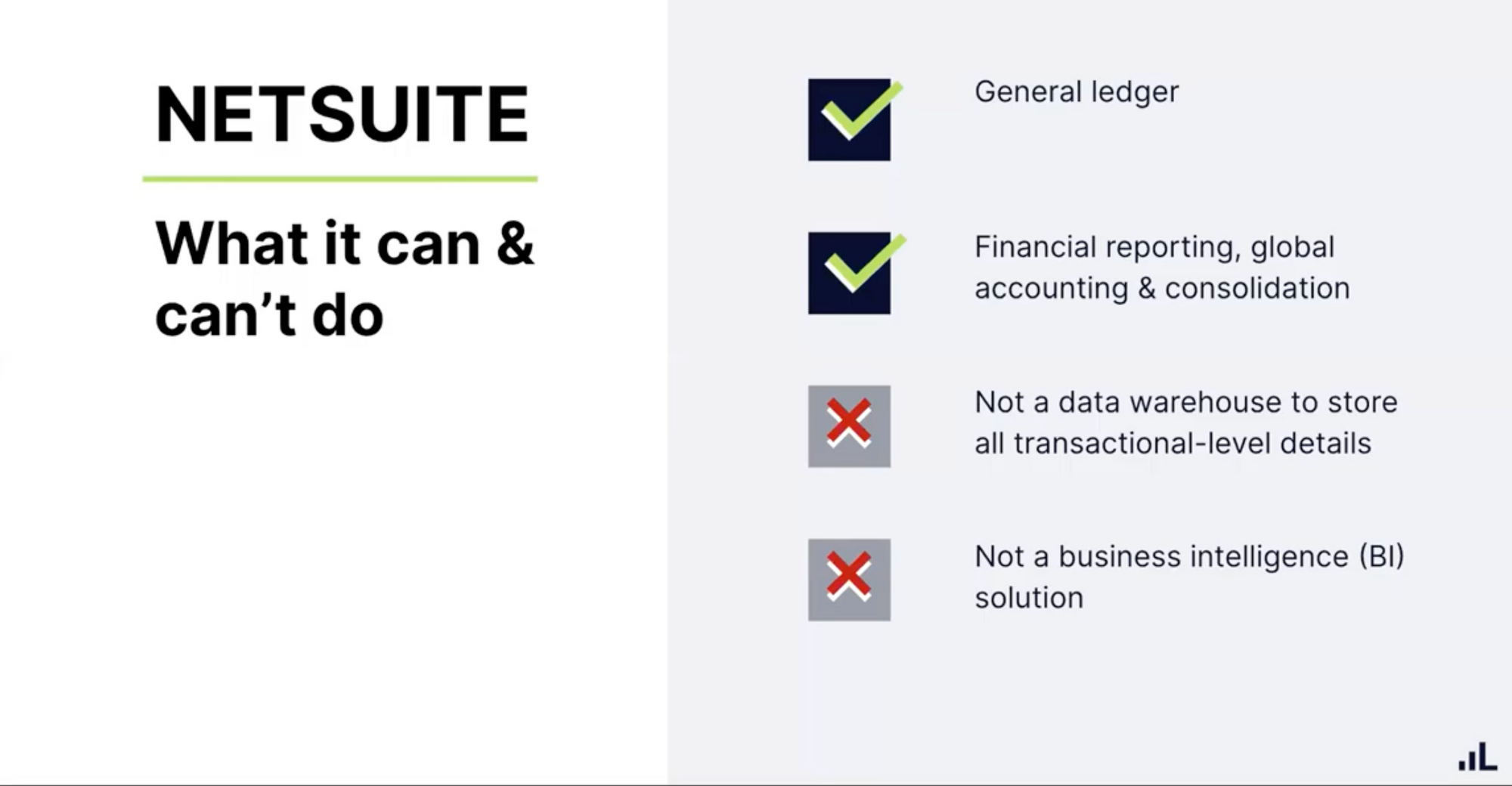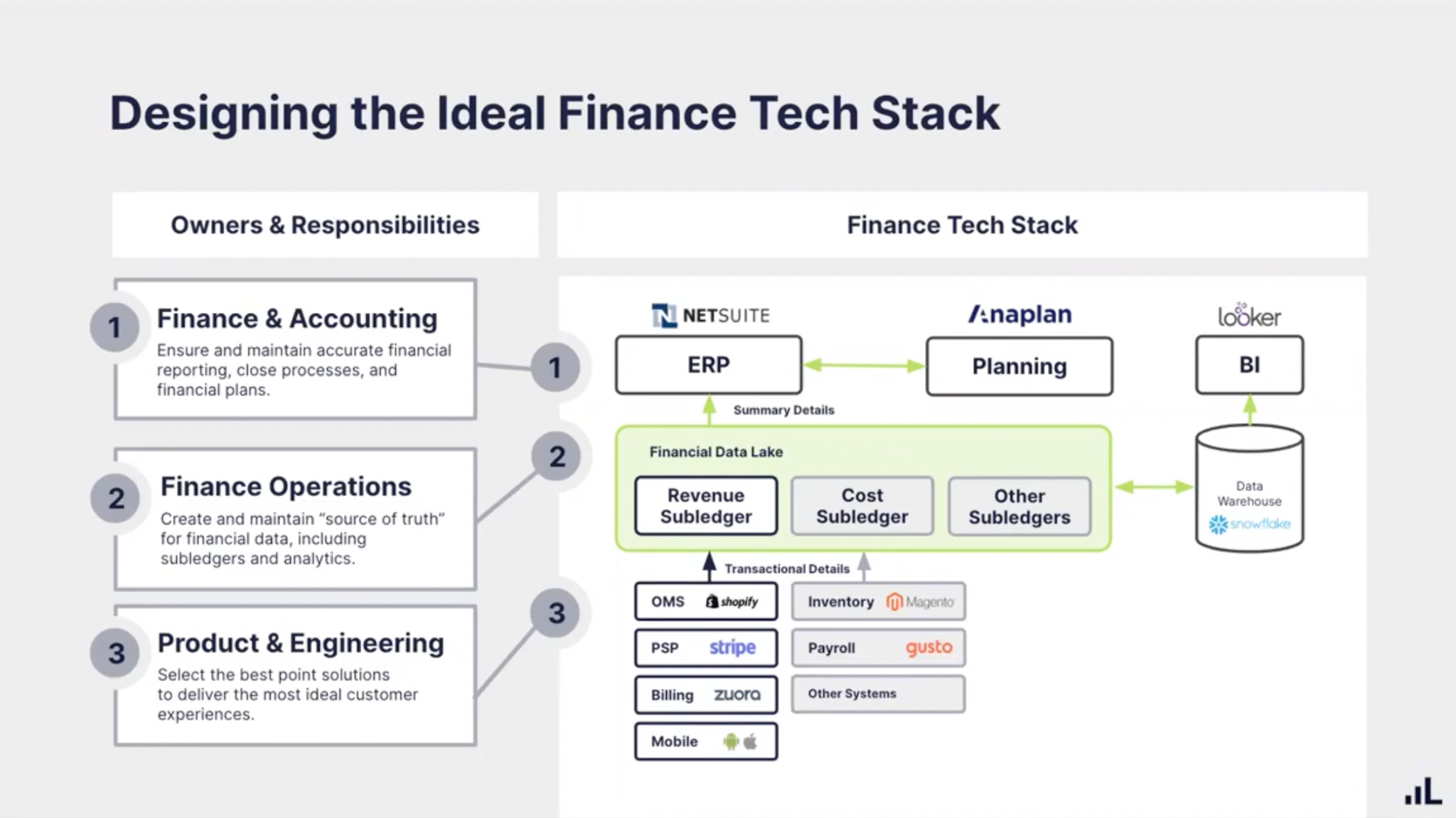NetSuite is the most widely adopted general ledger for finance teams at high-growth companies – but it is not without limitations. Digitization has created an explosion of data, both in volume and type.
But as your business grows and the number of transactions skyrockets, many finance teams are experiencing never-before-seen obstacles when using their NetSuite general ledger.
I sat down with Emily Eagon, Controller at Medium, to discuss best practices for building reporting for high transaction volume companies. We also discussed how to best leverage NetSuite to meet the needs of e-commerce and subscription-based companies.
Below are three key takeaways from the conversation.

Takeaway #1: NetSuite is a powerful tool for many things, but not everything.
NetSuite is a great general ledger and it’s excellent for traditional accounting metrics and reporting.
But for most high transaction volume B2C, e-commerce, and subscription businesses, NetSuite is simply not designed to manage their volume of financial data. Many companies try to process every single one of their Payment System Processor (PSP) transactions through NetSuite and it can quickly add up.
NetSuite wasn’t built to act as a data warehouse so it cannot manage or process millions or tens of millions of transactions quickly and efficiently.
High volume slows NetSuite down and creates challenges with syncing and data integrity. Because of NetSuite’s rigidity, it cannot also provide the flexibility you need to perform an in-depth, multifaceted analysis.
Don’t stretch NetSuite beyond its capabilities. Instead, design a tech stack that can stand up to your transaction volume and grow with you, not against you.
Takeaway #2: Design a tech stack and team that works for your company’s revenue model
In order to perform in-depth, multifaceted analysis on financial statements, finance and accounting teams at high transaction volume businesses need a few different systems. I suggest an ERP system, a planning tool, and a BI tool to help with building a solid tech stack.
Even with these tools in place, much of the reporting and planning data sits in systems owned by product and engineering, which is not easily accessible for finance and accounting.
If you aren’t bringing all of your revenue data into NetSuite, then how do you gain a comprehensive picture of your data?

To solve this challenge, many companies have begun establishing Finance Operations (or finance systems) teams to act as the liaison between finance/accounting and product/engineering. Finance Operations also ensures that financial data is well-maintained and serves as a single source of truth.
Want to learn more about Finance Operations and how to bring on a team into your organization? Download our whitepaper on this topic here.
Takeaway #3: Obsess over your company’s data design and integrity
To build great reporting, you need to ensure you have not just great, but flawless data design. There are three key things you can do to ensure well-designed data.
First, collaborate with your product and engineering team early and often. What accounting and finance teams want are often at odds with what product and engineering teams want.
Most accounting and finance teams desire flexibility whereas product and engineering optimize for efficiency and cost. Through collaboration, you can ensure that your product and finance team are able to balance their competing needs.
Second, have your team track as much data as you can. You can never fully predict the reporting needs that your C-suite or Board might have. Track as much data as possible with extreme detail so you can meet those reporting demands with no problem.
Even if you don’t think you’ll need access to that level of granularity, still opt to track it.
Third, never overwrite your data. Product and engineering believe that you should always design efficiently and that often means overwriting data from different sources.
But every accounting and finance leader knows the pain of PSP and billing systems not matching up. When you figure out why, it’s because there’s a data integrity issue, meaning that data has been overwritten or deleted.
See how Leapfin works
Get a feel for the ease and power of Leapfin with our interactive demo.